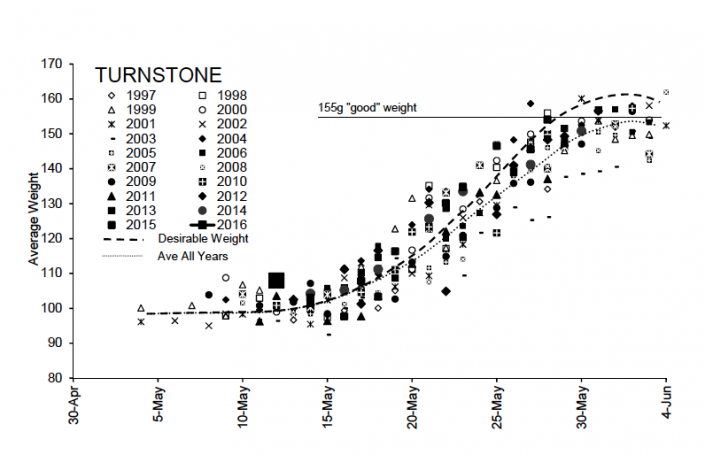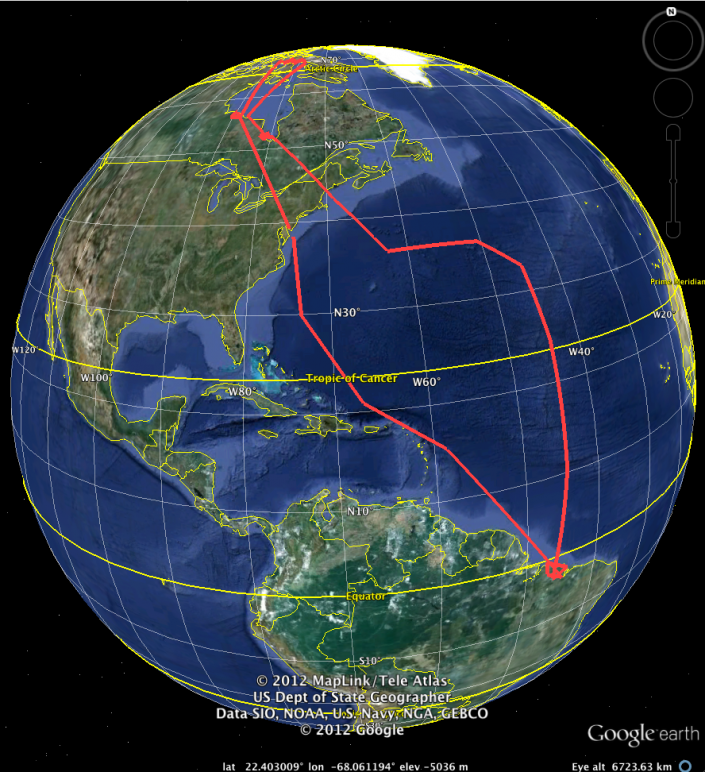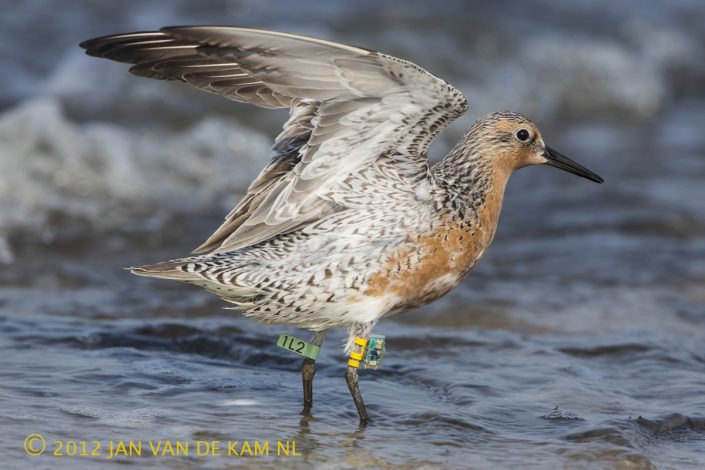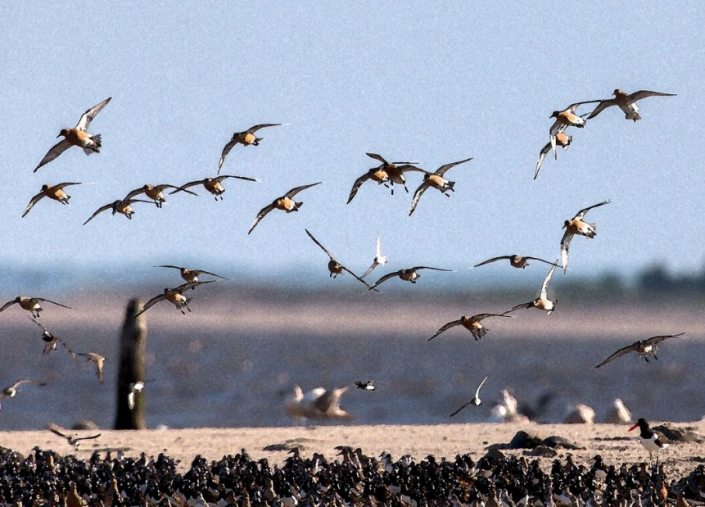Early, Good News from the Delaware Bay Shorebird Project Team
A Series of Updates on Year 20 of the Delaware Bay Shorebird Project
By: Dr. Larry Niles, LJ Niles Associates LLC
Our team trapped over 500 shorebirds over the weekend including several hundred red knots in two catches on May 12th and 14th! Most of the caught birds, knots, ruddy turnstones and sanderlings arrived in good condition, which is always a relief at this early stage in the season. Ruddy turnstones returned in better-than-average condition, weighing in at 5 grams higher than normal arrival weights.


The condition on arrival is an important focus of the project. In some years, knots struggled to get to the bay, coming in at average weights of 105 grams, 15 grams lighter than this year. One poor soul practically fell onto the beach with only 84 grams of weight, dangerously burning muscle to get here.
To really understand it best you must put yourself in the birds’ shoes (in a matter of speaking). We can do this because we have been attaching small tracking devices called geolocators on knots and turnstones for the last 5 years. Geolocators must be recovered to download the data, and we did this with a knot banded with the inscribed flag TVV in 2015. The map of that bird’s heroic journey can be seen below.


Follow TVV’S path from Delaware Bay to its Arctic breeding area, then down to its Chilean wintering area, then back to Delaware Bay. It spent less than one month in the Arctic but over 6 months in its Tierra Del Fuego winter quarters. The rest of the time was spent flying or resting between flights. It’s flight from Southern Brazil to Delaware Bay was truly awe inspiring!
Imagine you are TVV and about to fly from balmy Brazil to Delaware Bay, 5,000 miles away. Most birds will leave near nightfall, when the weather is settled and usually when there tends to be a favorable wind. Once aloft you have no idea of the conditions you will face for the next 6 days. Some birds have an easy time of it, some get caught in opposing winds, others get blown off course and must struggle to return. This is the reason for the varying weights on arrival.

So what did the birds find when they arrived this year? So far, the horseshoe crab spawn has gone well. It started early in the month, so that by the time birds like TVV arrived, they found a nice concentration of eggs for the taking on Delaware Bay beaches. At first, the birds poured into the bay. Last Thursday May 10th, we had about 1,000 knots on the New Jersey side of the bay. By Saturday, the number has grown to 8,000 knots – and our two catches proved they were gaining weight at a good clip.
All that changed on Sunday when a complicated cold front hit the bayshore. For two days we have had strong winds from the west, creating breaking waves on much of the New Jersey bayshore. The crab stopped spawning in most places. The winds blow as I write this blog and is certainly holding up birds from arriving, some may have stopped migrating others are fighting this merciless 30 mph wind.

In our next post, learn how the winds affected the birds over the last few days.
Learn More:
- Conserve Wildlife Foundation’s Delaware Bay Shorebird Project
- Conserve Wildlife Foundation’s online field guide: Red Knot
Dr. Larry Niles has led efforts to protect red knots and horseshoe crabs for over 30 years.
Discover more from Conserve Wildlife Foundation of NJ
Subscribe to get the latest posts sent to your email.
Leave a Comment
Hello! This was a terrific post. I’m glad to hear the banding is going well.
I was wondering about the red knots fall migration patterns. Do they also land in Delaware Bay in fall on their way south? If so, about when can we expect them?
Thank you!
Hi. I came across your site while looking for an answer to my question about why the bird population this year 2016 here in Margate and Longport NJ seems so sparse. I like to photography shore birds but this year there is very little to photograph. Can you offer any insights as to why the bird population here is so much less than it was in the last few years?
Any thoughts on this would be most appreciated.
Paul
Comments are closed.